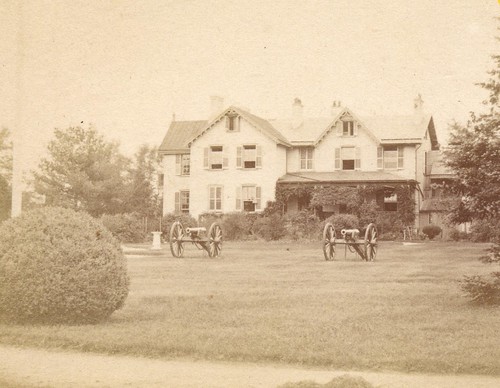By Jeff Larry
As the mechanization of cooling and ventilating a home began to take hold in the 1950’s, the traditional idea of passive cooling began to lose favor. Windows in older homes were sealed shut and many newer homes were designed with very little consideration to natural ventilation.
A result of a growth in interest in sustainable building is that the historic building’s natural ability to ventilate and cool is being revisited and traditional and new ways of passive cooling are being applied to modern buildings.
In his book Sun, Wind and Light, G.Z. Brown lists the 4 passive cooling strategies: Natural ventilation, evaporative cooling, high thermal mass and high thermal mass with night ventilation.
During the restoration of President Lincoln’s Cottage a high velocity HVAC system was installed that could be used to cool the building in the extreme heat of the late summer months. The preferable method is to use the building’s innate passive cooling abilities of natural ventilation and high thermal mass with night ventilation. These are the very methods used in the 1860s, when Lincoln was a resident (Figure 1).
Though there are numerous complicated definitions and formulas, natural ventilation is simply wind driven air flowing through windows on opposite sides of the building.
High thermal mass with night ventilation is a structures ability to absorb heat in the daytime into its walls and at night gradually release the heat to the inside rooms. The heat is then released back outside through an open window. If a building has double hung sash windows (also illustrated in Figure 1), night flushing is best done by lowering the upper sash and releasing the hot air that has risen closest to the ceiling.
Before the Washington D.C. August heat arrives, a few different methods have been experimented with to take advantage of the Cottages’ passive cooling systems. Its placement on a high, breezy hill and its numerous large windows allows for excellent natural ventilation and the thick brick walls are a good source for thermal mass heat transfer. For security reasons and to prevent visits from unwanted creatures, the windows are not left open at night to allow for night flushing. Rather, the windows are opened very early in the morning and allowed to stay open during the day. There are numerous exterior shutters that remain closed on the south elevation to prevent the direct sunlight from damaging interior furnishings and heating the rooms. The shutter’s louvers remain open to allow for natural air flow. As the hotter weather approaches the windows and south elevation louvers will probably be closed by late morning with much of the light coming from the north elevation windows.

